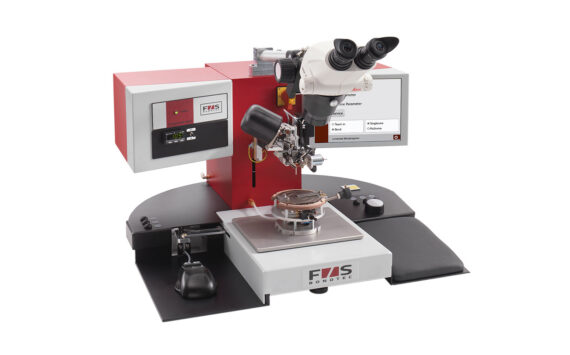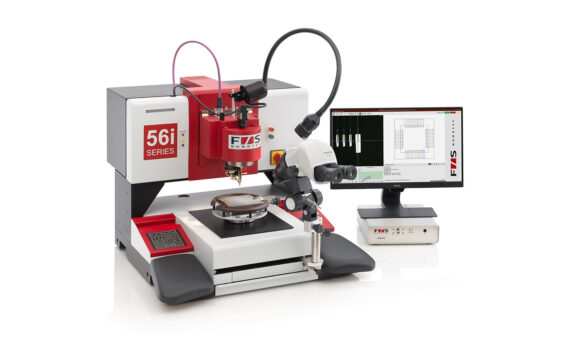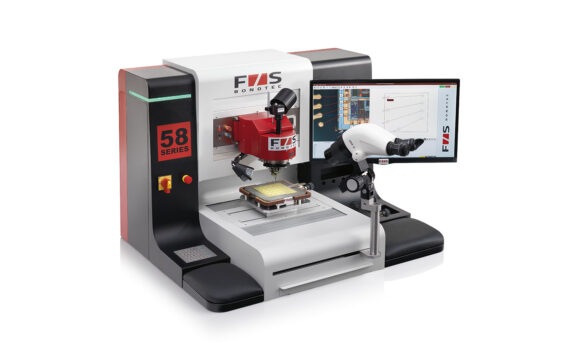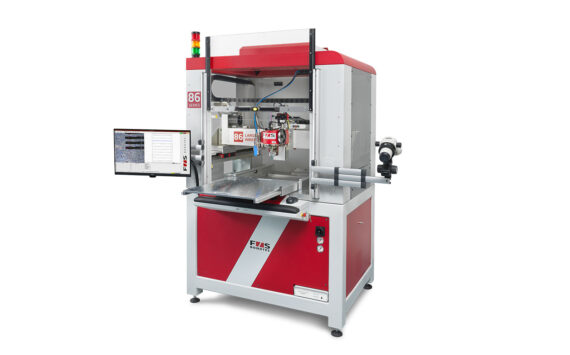
Thin-Wire-Wedge
Thin-Wire-Wedge-Wedge bonding is a variant of wire bonding that uses a wedge-shaped tool to connect thin wires to the bond pads of a substrate. With our 5330, 5630i or 5830-bondheads, aluminum and gold wires from 12 to 75 µm diameter can be bonded.

How does it work?
The process steps for wedge-wedge bonding are as follows:
- The wire is threaded through the wedge.
- The wire is pressed against the bond pad by the tool, applying ultrasonic energy to form the bond between the wire and bond pad.
- The tool is then moved to the second bond location and the process is repeated.
- Once the second bond is completed, the wire is clamped and torn off above the second bond.
It is possible to fix the component mechanically or by vacuum. Depending on the wire material, the component holder may also be heatable.
Thin-Wire-Wedge-Wedge bonding tools differ in a few ways. Details on the different tools can be found in the manufacturer’s data sheets. The most important parameters that need to be considered are:
- Wire diameter
- Length
- Feed angle
- Bond foot length (bond flat)
The position of the wire clamps must be selected according to the required feed angle of the bonding tool. The ideal course of the wire is in a straight line through the clamp into the bonding tool. The clamp opening width must also be adjusted to the corresponding wire diameter.
Advantages in Fine-Pitch applications
With the increasing complexity of devices and the shrinking of size, there is a growing need for more closely spaced wires or pitches. Accomplishing finer pitches necessitates the use of smaller diameter wires in all bonders, including ball and wedge techniques. However, reducing wire diameter also leads to diminished physical properties such as strength, stiffness, electrical conductivity, and thermal conductivity. The decreased strength and stiffness of smaller diameter wire have adverse effects on performance and reliability. This is where wedge-wedge bonding comes in. By deforming the wire directly without forming a ball first, wedge-wedge bonding achieves a more robust weld with minimal deformation, even in smaller sizes.
Advantages of Wedge-Wedge Bonding:
>> Because the first and second bond are of the same type, it is possible to bond from chip to substrate or in the opposite direction.
>> Better Looping – Wedge bonders inherently achieve the lowest possible loop heights.
>> Another advantage is that the component does not have to be heated once you bond with aluminum wire.






